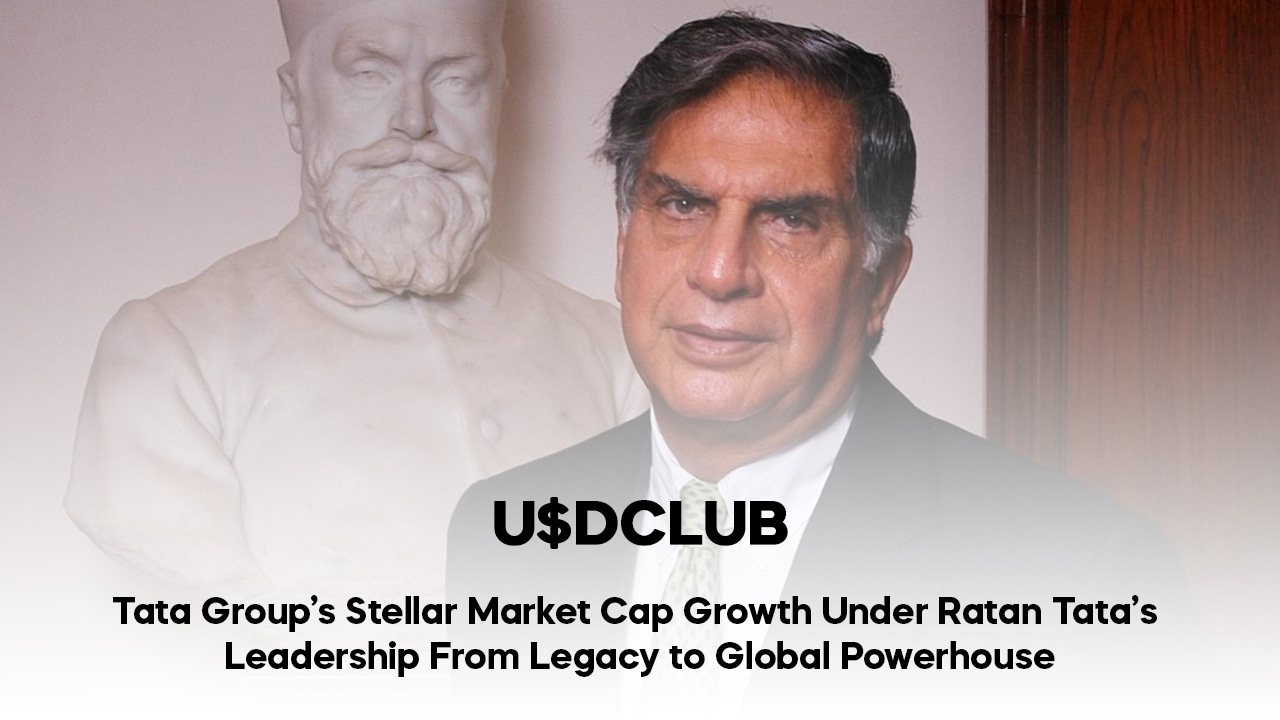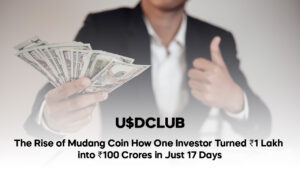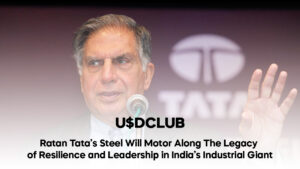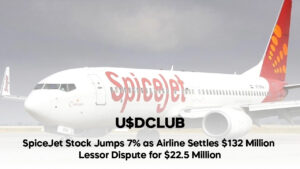The Tata Group, one of India’s most iconic and storied conglomerates, has a remarkable history that spans over 150 years. However, its transformation into a global powerhouse took a significant leap forward under the visionary leadership of *Ratan Tata*, who served as the chairman from 1991 to 2012. Under his guidance, Tata Group’s market capitalization grew exponentially, and the conglomerate evolved from a domestic player to a global giant, expanding across multiple sectors. This article delves deep into how Ratan Tata’s leadership helped steer Tata Group toward this tremendous growth trajectory, solidifying its position on the global stage.
Early Beginnings: The Legacy of the Tata Group
The Tata Group was founded in 1868 by *Jamsetji Tata*, and over the years, it established a reputation for being a pioneer in industrial growth and innovation in India. The group ventured into several key industries, such as steel, textiles, and hospitality. Notably, Tata Steel, Tata Motors, and Tata Power were the early flag bearers of the conglomerate’s expansion, setting the stage for future success. However, while the Tata Group had a solid foundation, the late 20th century brought with it the need for modernization and globalization—challenges that Ratan Tata embraced with open arms.
Ratan Tata Takes the Helm: A Vision for the Future
When Ratan Tata took over as chairman in 1991, the Tata Group was an established but largely India-focused conglomerate. The group’s operations were strong domestically but had little international presence. Moreover, the conglomerate was operating as a collection of individual companies with their own brands and identities, leading to a lack of coherence and synergy across its various entities.
*Ratan Tata* embarked on a mission to reshape the group’s corporate structure, streamline operations, and drive international expansion. He understood that in an increasingly globalized world, the Tata Group needed to transcend its domestic roots and take on the world’s biggest corporations if it was to continue growing.
Strategic Acquisitions: Key to Global Expansion
One of Ratan Tata’s most significant contributions was his focus on *strategic acquisitions*, which allowed the Tata Group to penetrate international markets. These acquisitions not only increased the group’s revenue but also enhanced its brand value and global reputation.
-
*Tata Tea Acquires Tetley (2000):*
The acquisition of the UK-based Tetley Tea for *$450 million* in 2000 was one of the first major international acquisitions by an Indian company. This deal marked the beginning of Tata Group’s global ambitions and made Tata Tea (now *Tata Consumer Products*) the second-largest tea company in the world. This was a bold move, especially during a time when Indian companies were cautious about venturing abroad.
-
*Tata Steel Acquires Corus (2007):*
In 2007, Tata Steel made headlines when it acquired the Anglo-Dutch steelmaker *Corus* for *$13 billion*. This acquisition was significant not only because of its size but also because it positioned Tata Steel as the fifth-largest steelmaker in the world at the time. This move helped Tata Steel establish a strong foothold in Europe and enabled it to access advanced steel manufacturing technologies.
-
*Tata Motors Acquires Jaguar Land Rover (2008):*
Perhaps one of the most iconic acquisitions under Ratan Tata’s leadership was the purchase of *Jaguar Land Rover (JLR)* from Ford in 2008 for *$2.3 billion*. This acquisition raised eyebrows globally, as many doubted whether Tata Motors could successfully manage luxury brands like Jaguar and Land Rover. However, Ratan Tata’s belief in the potential of JLR was vindicated, as the company turned around its fortunes, becoming a significant profit driver for Tata Motors. Today, JLR is a symbol of Indian manufacturing prowess on the global stage.
Streamlining and Consolidation: A Leaner, More Focused Tata Group
Under Ratan Tata, the group also underwent significant restructuring to focus on its core businesses and increase efficiency. He encouraged the various companies under the Tata umbrella to work more collaboratively, creating a sense of unity across the conglomerate. This shift allowed the group to leverage synergies between its different businesses, making it more competitive and streamlined.
A notable example of this was the *merger of Tata Oil Mills with Tata Chemicals*. This move allowed Tata Chemicals to diversify its portfolio and strengthened its position in the chemicals and consumer products sectors. Moreover, the Tata Group gradually exited businesses that were not in alignment with its long-term strategic goals. This resulted in a leaner and more focused organization.
Expanding into New Sectors: Technology, Telecommunications, and Retail
Ratan Tata’s leadership also saw the Tata Group venture into new and emerging sectors, such as technology, telecommunications, and retail. These sectors became vital components of the conglomerate’s growth story in the 21st century.
-
*Tata Consultancy Services (TCS):*
While Tata Consultancy Services (TCS) was founded in the 1960s, it was under Ratan Tata’s leadership that TCS became the crown jewel of the Tata Group. Ratan Tata recognized the potential of the IT industry and supported TCS’s global expansion, leading to its eventual rise as one of the world’s leading IT services companies. Today, TCS is not only the most valuable company in the Tata portfolio but also one of the most valuable IT companies globally, with a market capitalization exceeding *$100 billion*.
-
*Tata Teleservices:*
Tata Group also made a foray into the telecommunications sector with *Tata Teleservices*. Though the company faced stiff competition from major players like Airtel and Reliance Jio, its entry into the telecom market showed the group’s commitment to diversification.
-
*Tata Retail Ventures:*
The conglomerate also entered the retail sector with *Trent, which operates **Westside* and *Star Bazaar*. Tata’s retail ventures, while initially small, have grown steadily and now compete with major domestic and international retailers.
Market Cap Growth: The Numbers Tell the Story
One of the most remarkable aspects of Ratan Tata’s leadership is the exponential growth in the Tata Group’s *market capitalization. When he took over in 1991, the group’s market cap stood at approximately *$5 billion*. By the time he stepped down as chairman in 2012, Tata Group’s market capitalization had surged to over *$100 billion**, a 20-fold increase.
This incredible growth in market cap is a testament to Ratan Tata’s strategic vision and leadership. His focus on global expansion, operational efficiency, and innovation helped the conglomerate not only grow but also thrive in an increasingly competitive global market.
The Legacy of Ratan Tata
Ratan Tata’s impact on the Tata Group goes far beyond financial numbers. He is widely admired for his *values-driven leadership, with a focus on **integrity, **corporate social responsibility, and **long-term sustainability*. Under his guidance, the Tata Group became known for its ethical business practices and commitment to social causes.
One of the most significant examples of this is the *Tata Trusts*, which own 66% of the group’s parent company, Tata Sons. Through Tata Trusts, a large portion of the group’s profits is directed towards social causes such as healthcare, education, and rural development, underscoring the group’s commitment to giving back to society.
Conclusion: From Legacy to Global Powerhouse
Ratan Tata’s leadership transformed the Tata Group from a respected domestic conglomerate into a global powerhouse. Through strategic acquisitions, international expansion, and a focus on innovation and efficiency, he significantly increased the group’s market capitalization and global footprint.
Today, Tata Group operates in more than *100 countries, with over **100 companies* in sectors ranging from steel and automobiles to IT services and consumer goods. The group’s *market capitalization exceeds $300 billion*, making it one of the most valuable conglomerates globally.
As Ratan Tata continues to inspire future generations of leaders, his legacy remains firmly rooted in the growth and success of the Tata Group, a company that now stands as a symbol of Indian excellence on the global stage.
For more updates on Tata Group’s ongoing developments and other market insights, stay tuned to *USDCLUB.us*, your go-to source for financial news and analysis.







